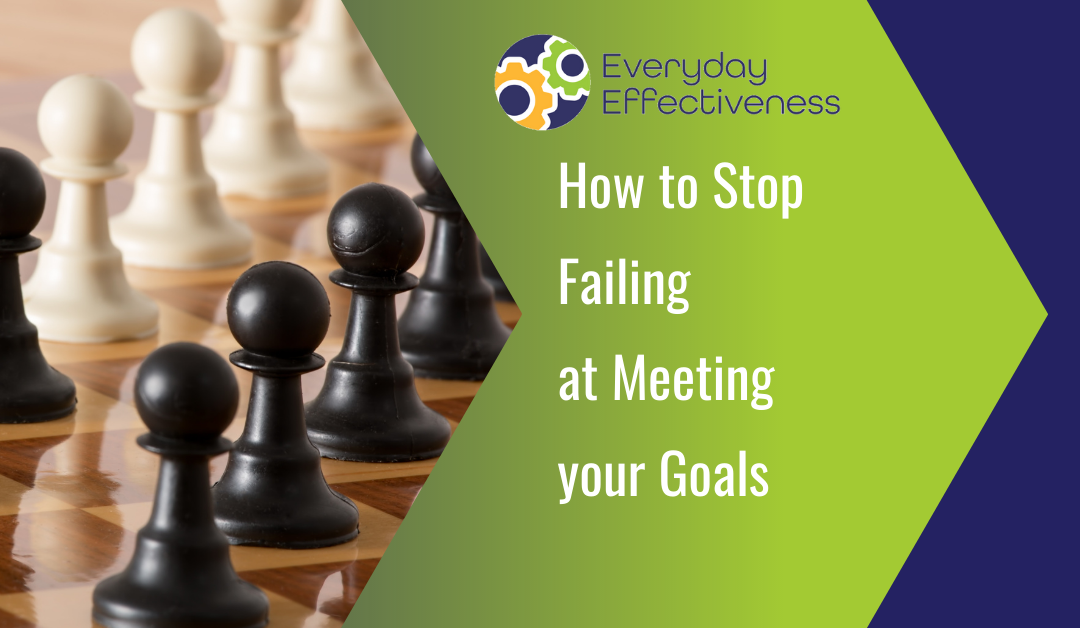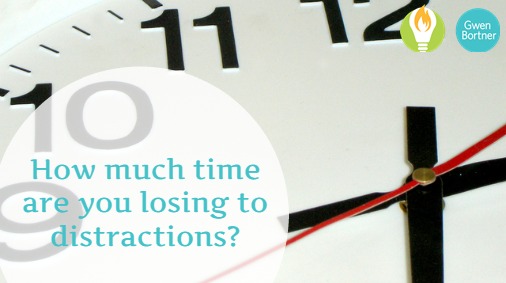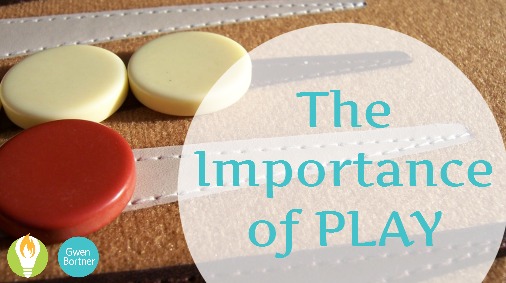
by Gwen Bortner | Office Productivity, Tasks & Goals, Tips & Tricks
Setting goals is great – it feels so good to think about the future and make plans for the greatness you will achieve in the coming year. The hard part comes when you start looking back at the goals you set, and you realize you haven’t met any of them. Stop letting yourself down – learn how to actually MEET the goals you set so that you don’t have to feel like a failure any more!
Here are my best tips for achieving the goals you set for yourself, whether they’re for life or business or both!
Tip #1: Understand whether or not this goal REALLY matters to you.
Often when we fail to reach a goal, it’s because we gave them lip service but weren’t truly inspired to reach them. We thought we should set the goal but as it turns out, we don’t want to actually work with it. So the first step is to eliminate all the goals that don’t actually matter. Though this may *feel* a bit like failing at those goals, in reality it’s more like de-cluttering your goal list so you can focus on working towards the things that matter most.
Tip #2: Keep your goal count low.
When you set too many goals at once, you’re focusing on too many things and you don’t get any progress made. Even if you have several goals in mind, choose just a few to focus on at any one time so that you can make real progress. It’s better to check off your goals one at a time because you can use that progress to motivate you to work toward the next goal, rather than pushing yourself to work on too many projects at once and feeling like you’re never going to finish anything.
Tip #3: Partner with someone who has similar goals.
This type of relationship is called an accountability partner, and it can be really helpful to work together with someone who has similar goals to your own. The concept is most familiar in the form of a workout buddy but it can be applied to any goal. The key is to work toward supporting one another and not turn it into a competition.
Tip #4: Work with someone who can help to push you toward reaching your goal.
Instead of an accountability partner (someone who has a similar goal), this tip is more about finding an outside person to motivate you to work on your goal. It might be a partner or friend or it could be someone like a business consultant or coach.
Tip #5: Set 3-Level Goals.
Todd Herman suggests you should give yourself goals at 3 levels: good, better, best. For instance: the best-case scenario is that you want to lose 50 pounds, but good would be 10 and better is 25. If you ONLY set the highest-level goal then it often takes too long to reach it and it’s easy to get discouraged. But when you reach the good or better goal then that can even be what motivates you to push to the next level.
Tip #6: Look for the WOW Mindset.
Instead of looking at how far you have to go, you look at how far you have already come. Instead of, “I’ve still got 9lbs to lose,” think of it like, “WOW, I lost a pound already!” Looking at your goals from the mindset of the progress you’ve made rather than what’s left to do is a way to encourage yourself to keep making that progress. (This is another of Todd Herman’s great ideas!)
Tip #7: Avoid the OW Mindset.
Herman’s final contribution to this post is the “OW Mindset,” or the idea that all too often we focus on what’s left to come instead of on how far we have already climbed. This tip is the companion to the last one; avoid thinking of the “pain” of what’s to come and instead focus on the success of what you’ve already achieved.
Tip #8: Recommit to your goals on a regular basis.
Review your progress, make adjustments as needed, and keep moving forward. This is the foundation of making actual progress – the process of checking up on the progress you’ve made and reminding yourself why you wanted to achieve that goal in the first place.
Sometimes, reaching the truly important goals requires more motivation and resources than you can drum up all by yourself.
If you’d like some help reaching your goals for 2022, I’m offering a free workshop where I’ll be teaching my 3 best strategies for reducing overwhelm and meeting your goals. Click here to sign up!

by Gwen Bortner | Office Productivity
You start your day feeling excited about a project you’re going to work on for your business. You start working, and after a little while one of two things might happen:
-
You get stuck on an idea and you’re not sure where to go with it; OR
-
You get some sort of interruption in the middle of your working time (email alert, phone ringing, your kid needs something, etc.)
Is this scenario familiar to you? What happens NEXT?
Understand your losses
At this point, you fall down a rabbit hole of distraction. You check your email, answer the phone, browse Facebook “to get some ideas,” or even just get up and switch the laundry or start lunch because you think you need a break.
You are actively working against your own success.
You have lost time, twice:
- The first amount is the time it took you to actually give in to that distraction (20 minute phone call, 30 minutes on Facebook, 10 minutes checking email, etc.).
- The second amount is the time you lost switching back and forth between two tasks; this is the actual time your brain takes to catch back up when you force it into a state of context switching.
Though you might understand the first loss, it’s my guess that you didn’t even realize you were losing that second block.
Get clear.
This table illustrates Todd Herman’s research on context switching:

No matter how much time you have to complete any given task, you automatically lose more than half of it just by adding another task into that time frame. The extra 20% goes to your brain, to allow it to mentally shift gears. As you can see, adding more tasks doesn’t grow in even amounts; the amount of time you lose to context switching increases exponentially every time you add another task.
Let’s say you have one hour to write a blog post. If you give in to 5 interruptions during that hour, you’ll actually only get 3 minutes to work on that blog post out of the whole hour, and you’ll lose 48 minutes of it to context switching. No wonder it feels like you never have enough time to do your work!
Improve your Focus.
How can you solve the problem of context switching?
Make it a habit to turn off your phone, close your browsers, and tell your family members not to interrupt unless there’s an emergency when you’re working. Give yourself the time you need in order to really do your work, and you’ll be amazed at how much more time you feel like you have, because you didn’t lose it to context switching!
How will YOU give yourself the time and space you need to get your work done? If you’d like a weekly reminder to focus on your priorities and take action to move you toward your goals, sign up below for my Weekly Course of Action e-mails. Let’s tackle this, together.

by Gwen Bortner | Office Productivity, Tasks & Goals, Tips & Tricks
A planner and To Do list are great tools for helping us be more productive, but sometimes we need an extra boost to keep us focused.
I have learned that when a similar idea or concept pops up repeatedly in my life, that is a clue that I should be paying attention. When a friend talked about using a timer for productivity and then I heard about the Pomodoro Technique, I decided I should give this a try.
The Process
As with all good productivity hacks, the process is simple: set a timer for a predetermined time and work until the timer goes off. Then set a second timer for a much shorter length of time and take a break. Determining the “correct” length of time is the tricky part.
My friend Edie accidentally discovered her optimal time while working between loads of laundry. The length of her dryer cycle allowed her to get quite a bit of work done while the time folding the laundry gave her mind a break from the task she had been concentrating on. When it was done, she was ready to go again. Through this process, she discovered she could work on tasks that required deep concentration for more total productive hours in a day by breaking it up into smaller chunks.
Pomodoro Specifics
The Pomodoro technique works around 25 minute intervals, but ultimately, I think each of us will have a different amount of time that will maximize our effectiveness. For myself, I find 50 minutes on, 10 minutes off to work surprisingly well. This is how I implement the system:
- Because most of my work is done at the computer, I utilize an online timer at TimeAndDate.com.
- I set up two timers: one for my work (50 minutes) and one for my break (10 minutes), and set them to start in sequence.
- I pick a task from my task list (or several if I think I can get more than one complete), start the timer and work on them until the alarm sounds.
- Then I take a break — browse social media, refill my water, use the restroom — until the second alarm sounds.
- I repeat Steps 3 & 4 until my tasks are complete or my work is done!
Why it Works
Most of us can focus for longer periods of time, but by breaking our time into smaller chunks, we are able to stay fresher and more alert. It also allows us to put off the things that might normally distract us. If the next break is no more than X minutes away, we can wait until then to engage in the “distraction” activity.
Most importantly it gives us a focus for getting a task (or tasks) done in a limited period of time. It is very easy for work to expand to fill the time that is available! By keeping those boundaries smaller, we are more likely to be efficient in the work in which we are engaging. A perfect example is this post — done in one work cycle where otherwise it might take 2 hours or more!
Give it a Try
Honestly, I don’t use this technique all the time. But when I find it hard to get actively engaged or feel like my productivity is low, I turn to my timer. I was skeptical when I first heard of it and it took some tweaks to figure out the correct balance of work and break time for me, but in the end I know this discovery has allowed me to be more productive in many ways and at times that would have otherwise been lost to distraction.
Let us know your results: Give this technique a try for a day (if you don’t already) and share what turned out to be your best balance of work and break time.

by Gwen Bortner | Office Productivity
These days, people treat multitasking like it’s a special talent; if you’re good at doing multiple things at once then that must make you a valuable and productive worker, right? Actually, that’s completely wrong.
Multitasking isn’t making us more productive; in fact, it’s doing exactly the opposite. According to INC, multitasking leads us to:
- a 40% drop in productivity
- 50% more time taken to accomplish a single task
- 50% more errors made while doing that task
So even though it may feel like you’re accomplishing more (because you’re working on more than one thing), you’re actually losing quite a bit of productivity when you focus on more than one thing at a time.
The Curse of Creativity
So many of us who lean toward the creative side of things seem drawn to multitasking. It’s not as much fun to focus on one thing at a time when there are so many (new! shiny!) distractions everywhere! Even in our personal hobbies, we often have multiple projects going at any given time, because it’s more interesting to start something new than to slog through something you’ve been working on for a while.
Context Switching
Though we often refer to it as multitasking, the real culprit here is context switching. The idea is that your brain is moving back and forth between thought processes or activities, even if technically you’re only working on one thing. For example: you’re writing a blog post, but your phone dings in the middle of it to let you know you’ve got a message on Facebook, so you stop to check that, and while you’re there you see an ad for those new shoes you’ve been wanting, and by the time you look at the clock you realize you’ve just wasted 30 minutes doing nothing at all.
Do you frequently find yourself jumping from one thing to the next, or are you able to remain focused on one task until it’s as complete as it can be in the moment? Read on for tips on how to increase your productivity by eliminating context switching from your daily routine.
Tips to Minimize Context Switching
- Block out your time. Set aside time for the things that take up time in your day: work tasks, personal or home-related tasks, and even things like checking email or browsing social media. You may tell yourself you’re “not going to check Facebook” during your working time, but let’s face it: you’re doing it anyway. By setting aside “Facebook time” on your calendar, you’re giving yourself permission to do that activity, but during the appropriate time for it.
- Keep your To Do list short. On any given day, you should have a list of no more than three important tasks you want to complete that day. By doing this you can give yourself the time you need to really devote your attention to those tasks, but if you overload your list with too many To Dos, you’ll feel tempted to work on them simultaneously or to switch between them before really completing anything, just to be able to say you worked on each item that day.
- Turn off the distractions. Our phones are like a window to the world outside, but they’re also a pipeline to distraction. You don’t NEED to be notified of every social media post, email, or even text message at any given minute of the day. If there’s a real emergency, someone will pick up the phone and actually call you. Turn off notifications on your phone during working hours, and make sure you don’t have any alerts on your computer.
- Get off the Internet. Having multiple tabs open while you’re working makes it too easy to just “click over for a minute” to check on a website that might distract you from your work. Cut out random Internet browsing during your work time. If you need to maintain a social media presence for your business, try to remember that you’re there for business – post to your own profile or group, but don’t get distracted reading other peoples’ posts.
Bonus “hack” for Facebook: set your Facebook page up so that it only shows you the groups you’re using for work or business, and hides all your personal feeds. That way you can check in for work and check back out again without getting distracted by photos of your best friend’s baby or your cousin’s dinner plate.
What’s the biggest “distraction trap” for you when you’re trying to be productive? Just knowing the answer to that question is the first step in avoiding that distraction in the future!
Would you like to train yourself to focus on what’s most important, and to work on the things that make the most difference in your life and business?
Join us in May for the Small Biz Book Club, where we’ll be reading Greg McKeown’s book, Essentialism. You’ll get a lot of great insights on how to improve your productivity and reduce distraction. Click here for all the details, or sign up using the box below:

by Gwen Bortner | Leadership, Office Productivity
Most of us have probably been in a situation where we worked with a group of people, and the project went well or terribly depending on the quality of the group leadership. In your business, whether you’ve got a company of 100, 10, or 1 – YOU are the leader. What’s the quality of that group’s leadership?
Do you think of yourself as a leader? If you’ve got the title of entrepreneur, CEO, or “wearer of all the hats,” you’re leading your company. It doesn’t matter how many people work for you – if you’re not in the regular habit of leading yourself, you won’t be able to lead anyone else, now or in the future.
What steps are you taking to become a better leader in your business? Here are a few questions to ask yourself:
Are you prepared for each day?
Do you regularly take time in the morning (or at the close of working time the night before) to prepare for your day? Do you have a list of tasks and one to three goals you want to accomplish each day? Do you know what absolutely must be done, what would be nice to accomplish, and what can be left off the list?
If your answer is NO, then take some time to think and plan at the start of tomorrow’s work day, and every day after that. Give yourself a list of no more than 3 tasks that must be accomplished, and set an intention for how you want that day to go. Establish this as part of your morning routine, and stick with it! You’ll be surprised how much more productive you are throughout the day when you’ve got a clear plan.
Do you regularly seek to improve?
Nobody ever got really good at something if they didn’t regularly strive to improve their skills, and the same holds true for running a business. As the leader of your business, you’ve got to start with improving yourself, and you’ve got to keep up the habit regularly. Read more business blogs or books (and apply the lessons you’re learning!), participate in webinars and online classes, go out and attend conventions or other events. There’s a ton of education available out there to help you get better at whatever you’re trying to improve, from marketing to operations to profit. Pick something and start learning! Put it on your calendar so that you’re setting aside time each week to learn something new.
Do you ask for feedback?
How do you know you’re good at something? Someone tells you! (The same is true for knowing if you’re not so good!). You can give yourself feedback by setting up regular times to review what’s working and what’s not in your business (once a month for a quick review and once a quarter for a longer one is a good rule of thumb). At these same intervals, it’s a good idea to get outside feedback, from employees, contractors, business advisers, consultants, and customers. Create a survey, send a quick email, give them a form to fill out, and ask them what you’re doing well and what could be improved. Then, the all-important next step is to follow up and make changes according to the feedback you receive.
What’s the very next step YOU will take in order to lead yourself toward improving your business?

by Gwen Bortner | Office Productivity
The phrase, “All work and no play makes Jack a dull boy” is true on many levels, probably more so in today’s over-worked, hyper-connected society. I think it is even more true for entrepreneurs.
When someone chooses to go into business for themselves, most often the focus of their business is something they find particularly interesting or exciting, and usually they are driven by their passion. These are all good traits for starting a business since entrepreneurship typically requires dedication and long hours. Unfortunately, these same characteristics often make it difficult for that same person to leave work – particularly to go play.
(more…)









